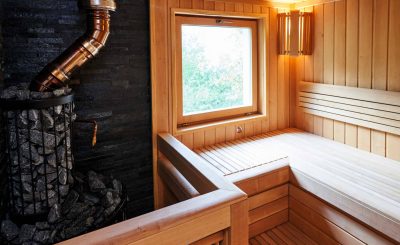In conservatories, rehearsal studios, and serious home practice rooms, traditional upright pianos continue to do quiet, indispensable work. They teach touch, control, and listening in a way no screen or speaker quite can. Ask a studio coordinator or a dealer such as Music Exchange what keeps their fleets busy: it’s the steady demand for reliable uprights that stand up to long hours and high standards. From stalwart models like the Yamaha U3 Upright to meticulously rebuilt European instruments, these pianos shape players’ technique and ear from the first scale to juried recitals. Here’s why their role is not just historical, it’s practical, musical, and still central in 2025.
Why upright pianos remain essential in classical training
Technique is tactile. Upright pianos deliver the nuanced resistance, leverage, and escapement feel that classical training demands. Students learn how to produce a true pianissimo that still speaks, how to voice inner lines against a singing melody, and how to coordinate pedaling so harmonies bloom without blur.
On an acoustic upright, the action’s friction points, key dip, and hammer–string interaction teach feedback through the fingers in real time. That feedback, minute changes in hammer velocity and escapement, trains fine motor control better than any velocity curve on a digital. And because acoustic sound decays naturally, students must shape phrases rather than rely on sustained samples.
Equally important is pedaling. Uprights let players practice true half- and quarter-pedaling, with the damper felt contacting strings in gradients rather than on/off steps. The left pedal on uprights is a half-blow mechanism (moving hammers closer to the strings), so students learn to adjust color rather than merely reduce volume. Those details matter when preparing Beethoven, Chopin, or Ravel, where tone production is part of the interpretation, not an afterthought.
Finally, upright pianos encourage listening. Sympathetic resonance, soundboard response, and room coupling help students hear overtones, intonation with other instruments, and balance between hands, skills that carry straight to ensemble work and to the concert grand.
Tonal richness and resonance compared to digital models
Digital pianos have made huge strides with multi-mic sampling and physical modeling. Yet the hallmark of an acoustic upright, the living relationship among strings, bridge, soundboard, cabinet, and air, remains uniquely complex.
Consider attack, bloom, and decay. On a well-regulated upright, the initial transient includes felt, wood, and string noise that blends into a bloom governed by the soundboard’s stiffness and the string downbearing on the bridge. Overtones interfere, reinforce, and change as the note decays, and sympathetic strings vibrate when harmonically related tones are played. Even top modeling engines approximate this: they don’t replicate the countless micro-variations of a real board breathing in a real room.
String length also matters. Taller uprights (like the Yamaha U3 Upright at approximately 131 cm) offer longer bass strings and a larger soundboard area, producing a rounder bass and a more singing midrange than shorter cabinets. That tonal headroom helps students learn voicing without forcing.
Digitals excel at consistency, isolation (headphones), and feature sets. But in acoustic repertoire, the acoustic upright’s resonance teaches how pedaling interacts with harmony, how timbre changes with touch, and how phrasing lives in the decay, not just in the attack. For training ears and hands, that complexity is not a luxury: it’s the curriculum.
Durability and craftsmanship in upright construction
Institutions choose uprights because they last when maintained. Under the fallboard sits a compact feat of engineering: a laminated pinblock holding tuning pins at precise torque: a spruce soundboard crowned for efficient energy transfer: maple bridges notched and pinned for clean speaking points: and an action with hundreds of felt, leather, and wood interfaces designed for repeatable motion.
Durability shows up in three ways:
- Structural integrity: A robust back-post design resists seasonal movement, protecting tuning stability. Quality uprights use dense woods and reliable glues: they stay in service for decades with regular care.
- Serviceability: Technicians can regulate, voice, and rebuild components. Hammers can be reshaped or replaced, bushings rebushed, key height and dip set accurately. An upright can be restored to near-new performance well into its life.
- Institutional resilience: Cabinets designed for school use handle frequent bench adjustments, castors rolling from room to room, and the occasional hard practice session.
Models built for heavy rotation, again, the Yamaha U3 Upright is a textbook example, pair long key sticks for leverage, sturdy cabinetry, and hammer felt that takes voicing. Compared with digital pianos, which face electronics aging and quicker obsolescence cycles, acoustic uprights reward maintenance with longevity. A sensible schedule, tuning one to two times per year, plus periodic regulation and voicing, keeps an upright performing at its peak. Add a humidity-control system and the instrument pays back the care with stable tuning and consistent touch.
The role of upright pianos in conservatories and schools
Walk any conservatory hallway and you’ll hear uprights behind every other door. They’re the workhorses of:
- Practice rooms, where long hours demand a reliable action and honest tone.
- Theory and sight-reading labs, where immediate acoustic feedback helps internalize harmony and rhythm.
- Coaching and accompaniment studios, where singers and instrumentalists need a responsive partner without the footprint of a grand.
Uprights hit the budget-space-performance sweet spot. Institutions can maintain a consistent fleet so students don’t relearn touch in every room. For juries and recitals, training on an acoustic, upright in the practice room, grand on stage, means skills transfer cleanly. Pedaling, voicing, and balance all scale up naturally.
Schools also benefit from predictable servicing. Technicians can plan triage and rotation, light voicing for rooms used by first-years, deeper regulation for advanced studios. Dealers such as Music Exchange often support this with institutional packages: selection of robust models, delivery logistics, and maintenance schedules that keep instruments in top shape. The result is an ecosystem where the piano serves learning, not the other way around.
Performance advantages for serious musicians
Serious players leverage uprights for more than practice. In teaching studios and intimate salons, a tall upright can carry the room with authority while leaving space for listeners. In pit orchestras and rehearsal halls, it fits where a grand cannot, yet still provides the acoustic cues colleagues depend on.
For recording, the upright’s character is a plus, not a compromise. Engineers close-mic hammers for percussive clarity or back off to catch soundboard warmth. The varied decay of an acoustic upright sits in a mix in a way uniform digital tails often don’t without extra processing.
Modern options expand utility: many professional uprights offer “silent” systems, letting players switch to optical sensors and headphones at night. A Yamaha U3 Upright equipped with a factory Silent or TransAcoustic system, for example, preserves acoustic training by day and quiet practice after hours, no second instrument required.








